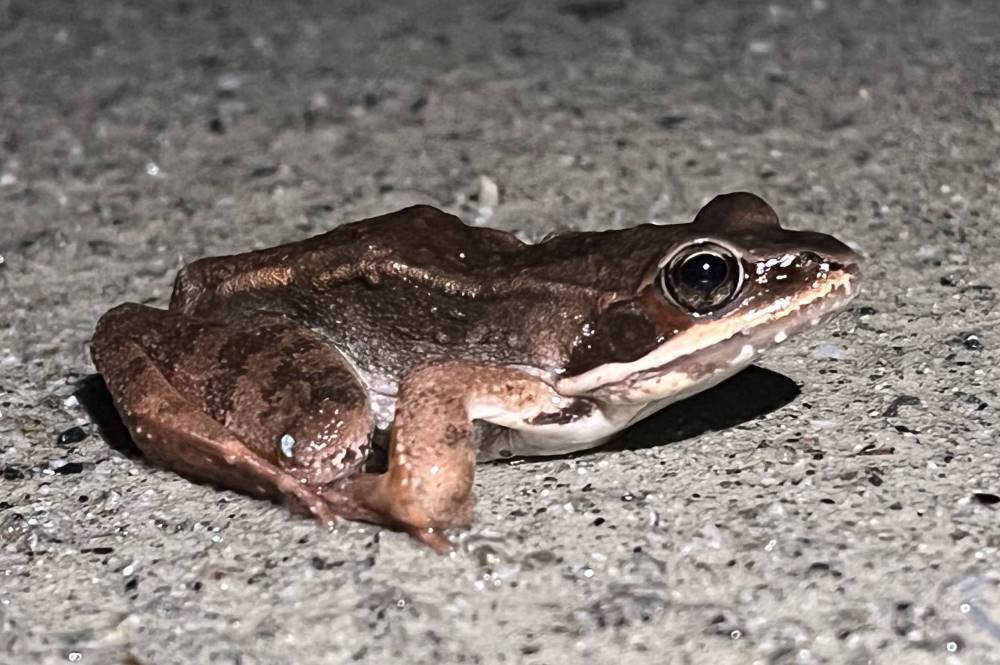What do Wood Frogs Sound Like?
The Wood Frog’s call sounds like a series of explosive clucks. Some have compared this to the sound of a group of ducks hoarsely quacking. During the breeding season, these frogs can produce up to 500 or 600 call notes per hour!
Wood Frog (Lithobates sylvaticus) sounds are one of about 30 true frog noises in the United States and one of about 100 frog vocalizations.
Wood Frogs also have a softer one-to-three-syllable call from their overwintering sites on land. These calls can sometimes be heard during autumn and winter from isolated frogs buried beneath the surface litter.
Check out the clip of their most commonly heard sound, the male Wood Frog’s mating call, in the video below.
When Do Wood Frogs Call?
Wood frogs are one of the first frogs to arrive at breeding ponds and they often cross snow and ice patches to get there from their winter homes on land. Males usually arrive before females and space themselves out evenly on the surface of the pond.

Wood frog sounds not only attract females but also draw other males to the breeding pond, which leads to choruses. I’ve sometimes heard large groups of wood frogs sound like an almost overwhelming cacophony of quacks.
The timing of breeding depends on the temperature and varies depending on the location. In general, breeding occurs from late winter to early spring when the air temperature reaches 41-50°F..
The exact dates can vary greatly by location. For example, breeding can occur from early January to early May in the Southern Appalachians and as late as mid-June in Alaska.
In the southern regions, wood frogs remain hidden during the day and only call out at night. Calling is most active in the first few hours after dark. However, in areas farther north, calling can occur during the day.
Where do Wood Frogs Call From?
During breeding season, male Wood Frogs can be found floating or swimming around a pond, with their front limbs in the water and rear limbs extended for swimming.
They interact frequently with other males and are very alert, quickly diving into the leaf litter when disturbed. This can make them difficult to approach.
References
This sound guide draws from several sources, including several AmphibiaWeb and Animal Diversity Web, The Frogs and Toads of North America (2009) by Elliott, Gerhardt, and Davidson and Frogs and Toads of the United States and Canada (2013), by C. Kenneth Dodd.
